Adore the Lord in Holy Attire – On Proper Dress for Mass
Last week we had a discussion on the women wearing veils in Church. One of the themes that emerged in the comments was that the discussions about what to wear in Church should be broader than just a veil. More specifically BOTH men and women should consider how they dress when going into God’s house. Hence I would like to explore some background issues and enunciate some principles. You of course will be able to add to them.
1. Scripture – There is very little in Scripture that seems to spell out the proper way to dress for sacred worship. There is the general directive to Adore the Lord in holy attire (Psalm 96:9; Ps 29:2) But this seems more an allusion to holiness (God’s and ours) more than to clothing per se. There are directives for the Passover meal that one should have staff in hand, with loins girt and sandals on their feet (Ex 12:11). But this seems a specific rule for the Passover meal only and hardly something that would done in the synagogue or temple. To gird one’s loins meant to pull up the lower part of one’s outer garment and tighten the belt. This exposed the lower legs and allowed greater mobility for them. It was a sign of being flight or of being at work. It is the ancient equivalent of “roll up your sleeves.” (more HERE). As a general rule Jewish people would not show their legs unless circumstances strongly required it. They would surely not come to the synagogue or the Temple in this manner. Scripture also speaks of Phylacteries and Prayer Shawls. But these sorts of clothing and accessories seem to have come under some critique in the New Testament (Matt 23:5) and their use was not continued in the New Testament Church worship.
2. Church norms and rules – There are no official and specific Church norms or requirement for lay persons who attend Mass mentioned in Canon Law or the Sacramentary. Surely for priests and other clergy there are many rules and norms but I am unaware of any currently binding norms for the laity. Although the veils were once required for women, the 1917 Code of Canon Law was abrogated and the current code is silent on any requirement.
3. Hence it seems that Culture supplies most of the norms regarding what is considered appropriate attire for Church. And, alas our culture is currently quite unhelpful to us in this regard. Here in America we have become extremely casual about the way we dress for just about everything. It seems we almost never dress up anymore. This has changed somewhat dramatically in my own life time of just less than 50 years. “Sneakers” or “tennis shoes” as we called them were for sports or running around and playing in the neighborhood. But we would never even think of wearing them to school and certainly not to Church. I remember having a special set of shoes just for church. In the 1960s, it was also expected that I would go to Church in formal, pressed trousers, a button down shirt, and, except in the hottest months, a tie and even a suit jacket in winter. My sister and mother always wore a dress. Pants would not even have been considered for them. For the younger girls a skirt and a blouse might be OK but preferably a dress with a hat or veil.
But things changed dramatically around 1970. The photo above right was taken in 1969 at St. John the Evangelist Parish in Canton, Massachusetts. It was the end of an era. Within five years neckties were lost and jeans and a t-shirts came to be the norm. Most of the women as we discussed lost the veil, and dresses gave way to more casual pants suits and then also to other more casual things like jeans etc. Shorts for men and women, unthinkable in previous years also began to appear in church as did tank tops and other beach attire. Within ten years the culture of dressing up for Church was almost wholly abandoned. Now wearing a tie to Church would seem stuffy and formal.
But this is where our culture has gone. It is not just Church. Years ago when my family went out to eat we almost always dressed up. Maybe it wasn’t a full neck tie but at least trousers and a button down shirt. Maybe not a formal dress for mom and sis, but at least a skirt and blouse. A restaurant was considered a semi-formal outing. School was also considered a place where things like jeans and informal t-shirts were out of place. Going down town to shop meant we changed out of shorts and put on something appropriate. Shorts were basically for running around the house, playing in the yard and such. But you just didn’t go out to more public settings wearing shorts and flip flops or even sneakers.
Pardon me for sounding like and old fud but I am not really that old. My point is that culture has changed, and changed rather quickly. This has affected the Church as well. What were fighting is a strong cultural swing to the extremely informal. Most people don’t even think of dressing up for most things any more let alone Church.
4. Hence at the cost of seeming old and stuffy I might like to suggest a few norms and I hope you’ll supply your own as well:
- Men should wear formal shoes to Church. We used to call these hard shoes (because they were) but today many formal shoes are actually quite comfortable.
- Men should wear trousers (not jeans).
- Men should never wear shorts to Church.
- Men should wear a decent shirt, preferably a button down shirt. If it is a pullover shirt it should include a collar. Wearing a plain t-shirt without a collar is too informal.
- Men should consider wearing a tie to Church and in cooler weather, a suit coat. Some may consider this a bit too stuffy and formal but who knows, you might be a trend setter!
- Now as I talk about women I know I’ll get in some trouble!
- Women should wear decent shoes to Church. Flip flops, beach sandals etc. seem inappropriate.
- Women should not wear shorts to Church.
- Women, if they wear pants, should never wear jeans to Church. Some nice slacks that are not too tight can be fine.
- Women should consider wearing a dress or at least a skirt in preference to pants. It just looks a bit more formal than pants.
- Women should wear a nice blouse (if they are not wearing a full dress). The blouse or shirt they wear should not be too tight.
- Sleeveless garments are pushing it a bit but can be acceptable.
- Women should never wear tank tops, tube tops, spaghetti straps, or bare midriffs to Church.
- Well, you may have at this list. Add or subtract as you will.
A final thought: Clothes say something about what we think, what we value. They also influence how we behave and feel. That our culture has become so casual about everything says something about us. I cannot exactly articulate it but it seems to say, “nothing is really all that important.” But that is not true. Going to God’s house IS important. Being ministered to by the King of Kings and Lord of Lords is astounding. Casual attire in these circumstances is simply inappropriate if we really think about what we are doing, where we are going and who it is we will meet. It does not necessarily follow that we must wear tuxedos and formal gowns. But decent semi-formal attire seems wholly appropriate. Sunday is special, God’s House is special. Somethings really ARE important and our clothing and demeanor ought to reflect this truth.




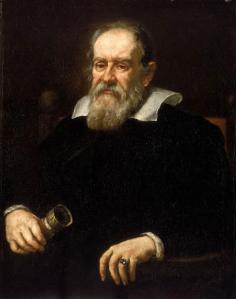
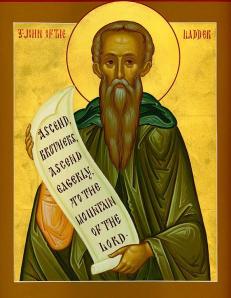
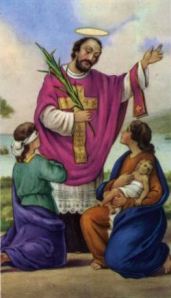
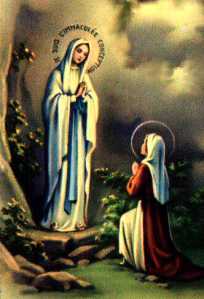

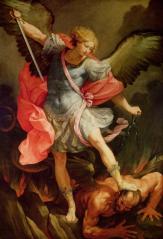
Before the Cross: Good Catholics Cannot Be Pro-choice
Posted in Commentary, tagged Abortion, Archbishop Robert Carlson, Bishop, Catholic, Commentary, Fifth Commandment, Jesus, Knights of Columbus, Magesterium, Philosophy, Theology on August 15, 2010| Leave a Comment »
[The following article from Archbishop Carlson is very clear — you cannot support abortion and still claim to be a Catholic.]
Before the Cross | Good Catholics cannot be pro-choice; The Fifth Commandment demands respect for life as God’s most precious gift
God’s law in the Old Testament is clear and unambiguous: You shall not kill. Jesus is even more demanding: Every one who is angry is liable to judgment.
Sins against the Fifth Commandment are easy to commit. Any time we think, speak or act out of anger or hatred or jealousy or revenge, we abuse God’s commandment that we respect His most precious gift, the gift of life — especially human life.
Human life is sacred because, from its beginning until its natural end, it involves the creative action of God. The Fifth Commandment forbids direct and intentional killing as gravely sinful. God alone is the Lord of life. No one has the right to end arbitrarily what God has begun, and sustained, through the gift of His love.
In the account of Abel’s murder by Cain (Genesis 4:8-12), Scripture reveals the presence of anger and envy in humankind, consequences of original sin, from the beginning of recorded history. God declares this as wicked, and He asks the question to be answered over the ages: “What have you done?” Today this question is asked not only of those who kill someone, but also of those responsible for violence, anger, hatred and vengeance in any form.
It is a shame that there are so many violent words expressed between members of the same family day in and day out. Anger and intolerance are also pervasive in our Church and in society. Such attitudes are destructive and sinful. They are of the Evil One and not of God.
The Fifth Commandment does not stop someone from self defense, because someone who defends his or her own life is not guilty of murder. Legitimate defense can be not only a right but also a grave duty for someone responsible for another’s life, the common good of the family or the security of a nation. We risk our lives to protect ourselves and others because we value human life and freedom so dearly. They are gifts from God that we are bound to cherish and defend.
Since the first century, the Church has addressed the moral evil of abortion and the killing of a defenseless baby in the womb. People who are casual about the sin of abortion and who choose to view it as a political issue rather than the serious moral issue that it is are guilty of violating the Fifth Commandment. You cannot be “pro-choice” (pro-abortion) and remain a Catholic in good standing. That’s why the Church asks those who maintain this position not to receive holy Communion. We are not being mean or judgmental, we are simply acknowledging the fact that such a stance is objectively and seriously sinful and is radically inconsistent with the Christian way of life.
The Fathers of the Second Vatican Council said, “God, the Lord of life, has entrusted to men the noble mission of safeguarding life, and human life must be protected with the utmost care from the moment of conception: Abortion and infanticide are abominable crimes” (“Gaudium et Spes,” No. 51.3). That’s why formal cooperation in an abortion constitutes a grave offense. The Church attaches the canonical penalty of excommunication to this crime against human life (see canons 1398,1314, and 1323-1324).
The Fifth Commandment also directs us to work for justice and peace — avoiding war whenever possible — and to limit the use of capital punishment to the most extreme (and rare) circumstances required to protect human life. Only God has the right to take the life of another human being. When we take that action into our own hands — in self-defense or in defense of others — we had better be sure that all other options have been exhausted!
In addition, euthanasia or deliberately taking of the life of someone who is sick, dying, disabled or mentally ill is morally unacceptable. The Church calls for the ordinary care owed to a sick person, but medical procedures that are burdensome, dangerous or extraordinary are not necessary. If you are unsure about the moral implications of health care procedures that are being proposed for someone you love, contact your pastor or the archdiocese’s Respect Life Apostolate. They will be happy to help you consider approaches that are in accordance with our Church’s teaching about care for those who are sick or dying.
Taking proper care of our health, respecting others and showing respect for the dead are all matters covered by the Fifth Commandment’s demand that we reverence God’s most precious gift — human life.
Share this:
Read Full Post »